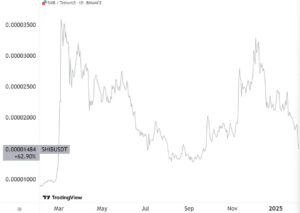Kraken and Crypto.com are among crypto exchanges developing their own stablecoins in response to the EU’s new regulatory framework, which is set to tighten oversight on third-party issuers, Bloomberg News reported on Feb. 21.
The move comes as the Markets in Crypto-Assets (MiCA) regulation, which took effect in January, introduces stricter compliance measures for stablecoin issuers operating in the European market.
Under MiCA, all stablecoins — referred to as “e-money tokens” (EMTs) and “asset-referenced tokens” (ARTs) in legal terms — must obtain authorization from an EU-based financial regulator. Issuers must also demonstrate transparency in reserves, maintain stable backing with liquid assets, and comply with stringent consumer protection measures.
MiCA has already begun reshaping the European stablecoin landscape. Non-compliant stablecoins, including Tether’s USDT and PayPal’s PYUSD, have been forced off most exchanges operating in Europe because they do not meet the new requirements.
The European Securities and Markets Authority (ESMA) has set a final March 2025 deadline for exchanges to delist all unauthorized stablecoins, further pressuring issuers to either secure compliance or exit the region.
Kraken and Crypto.com’s response
Rather than rely on third-party stablecoin providers that may struggle to meet MiCA’s rules, Kraken and Crypto.com are proactively developing proprietary stablecoins to ensure regulatory compliance and maintain operational stability within the EU.
Kraken is reportedly planning to launch a US dollar-backed stablecoin through its Irish subsidiary, which would allow it to maintain its European presence without disruption.
Crypto.com is also developing its own stablecoin, although details about its fiat backing and issuance structure remain undisclosed. The company recently secured a MiCA license from Malta’s financial regulator, enabling it to operate across all European Economic Area (EEA) member states.
The shift toward in-house stablecoins is a direct response to the tightening regulatory grip on digital assets in Europe. It ensures that exchanges retain control over their liquidity and transactions rather than relying on third-party stablecoin issuers that may face legal uncertainty.
Scramble to comply
MiCA is expected to set a global precedent for stablecoin regulation and will influence policies beyond the EU, including in the US and Asia.
The framework requires stablecoin issuers to hold fully backed reserves in high-quality liquid assets, provide clear disclosures about redemption mechanisms, and obtain direct authorization from an EU member state.
The regulation also introduces caps on large-scale stablecoins exceeding €200 million in daily transactions, aiming to mitigate systemic risks.
With these requirements in place, many stablecoin issuers are struggling to meet compliance deadlines. While Circle has taken steps to align its USDC with MiCA, other issuers, including Tether, have yet to finalize regulatory approvals.
Meanwhile, exchanges are positioning themselves within the new framework. KuCoin recently applied for a MiCA license in Austria, reflecting a broader shift among major platforms toward regulatory alignment.
The post Kraken, Crypto.com among exchanges planning stablecoin launches in EU appeared first on CryptoSlate.
This article was originally published on Bitcoin Magazine.
































![artwork+horizontal+small+(1)+[Recovered]](https://blockchainlex.io/wp-content/uploads/2024/06/artworkhorizontalsmall1Recovered-768x517.png)